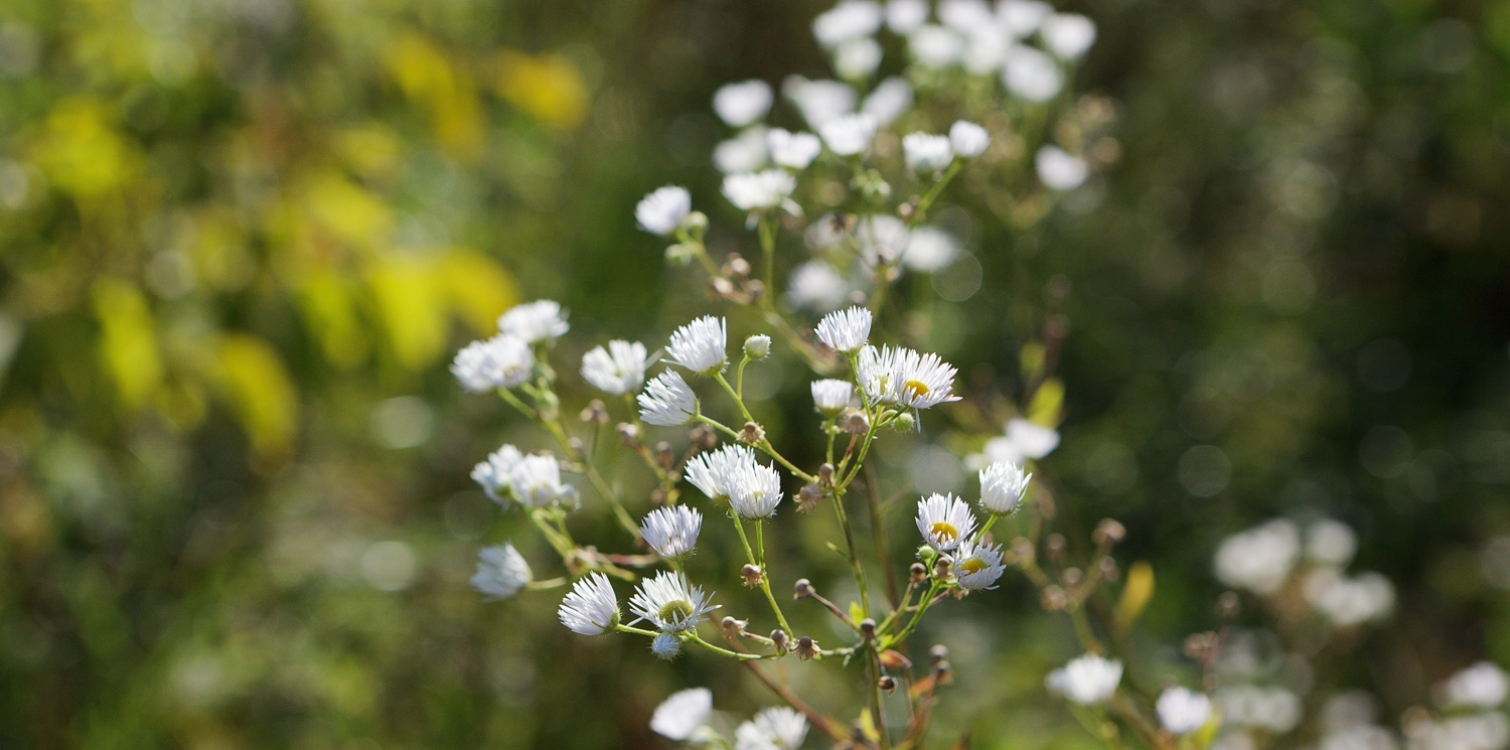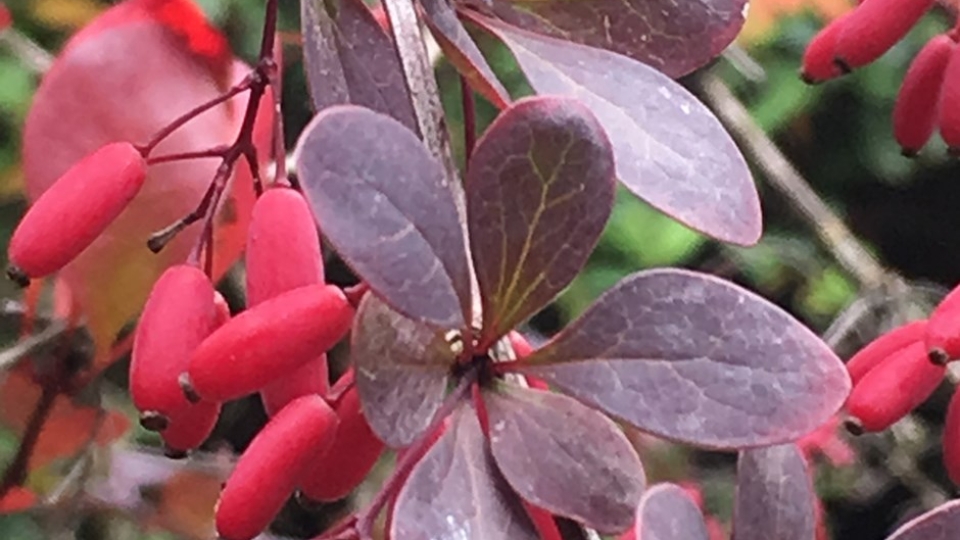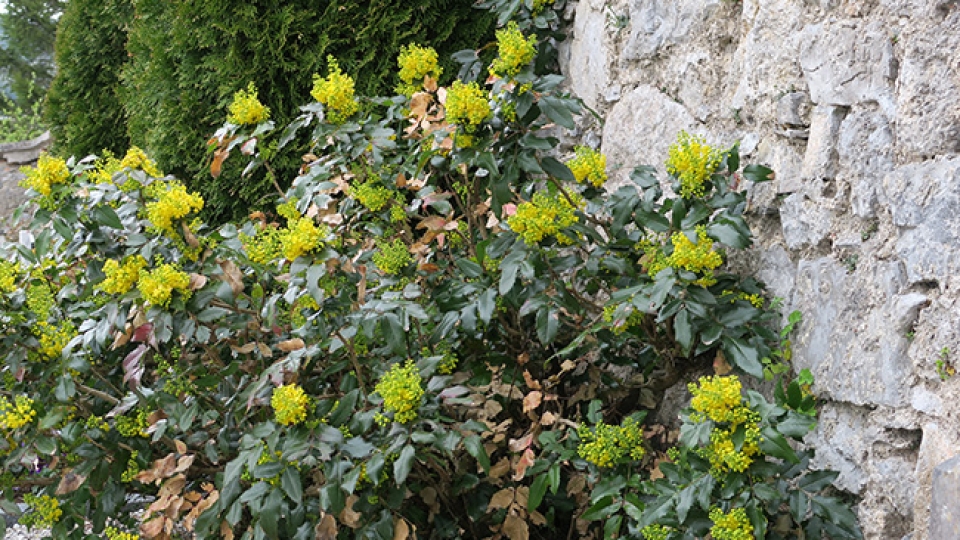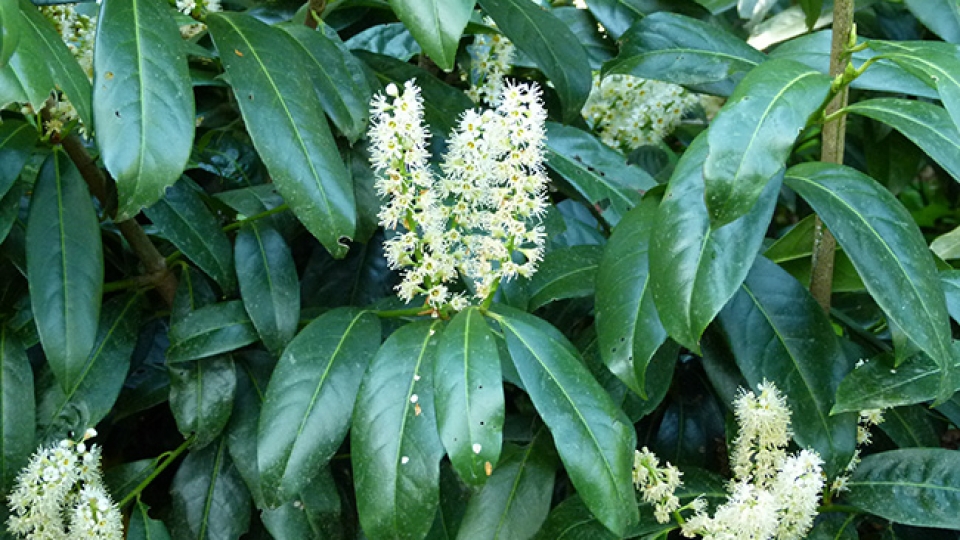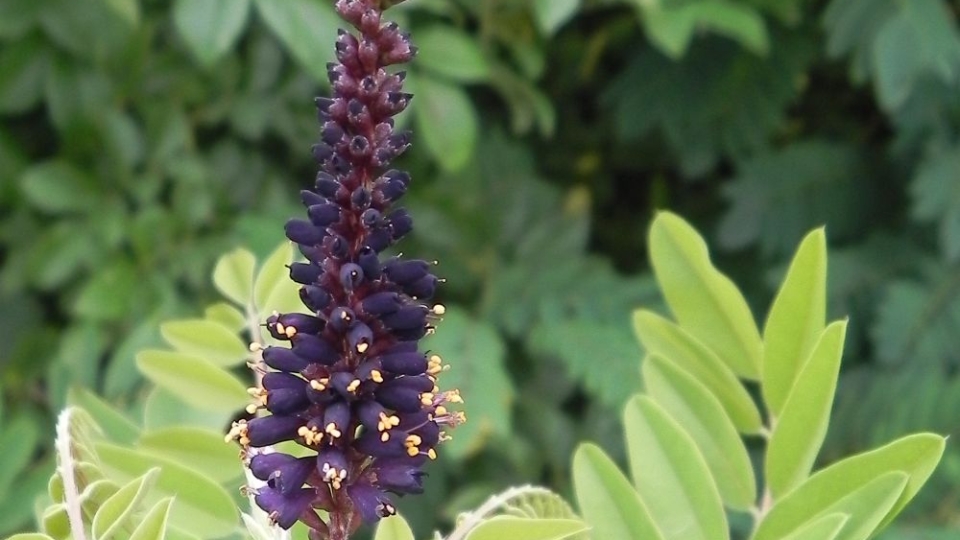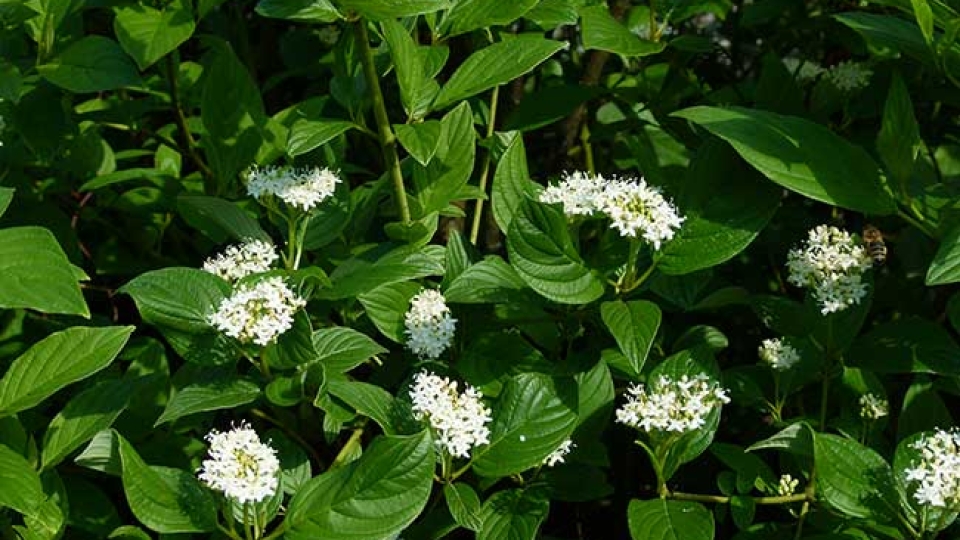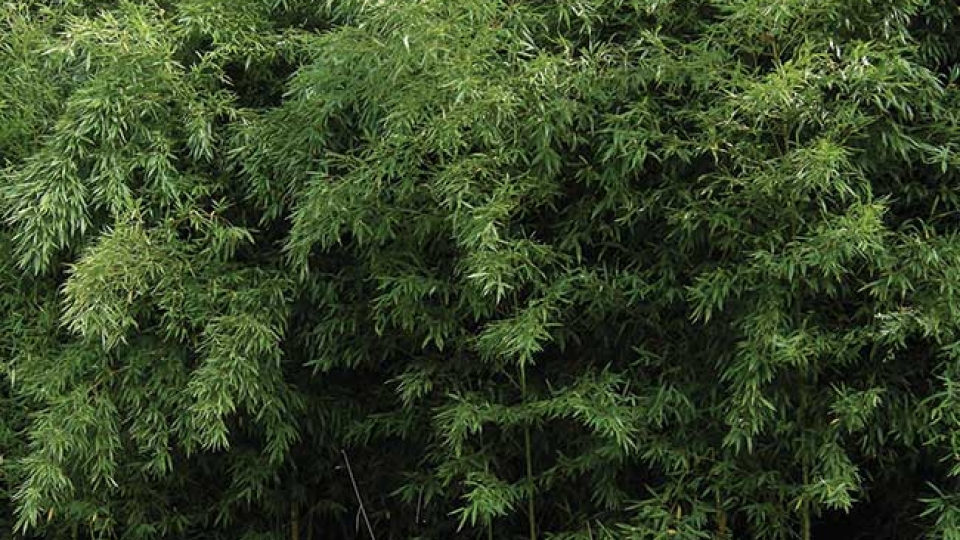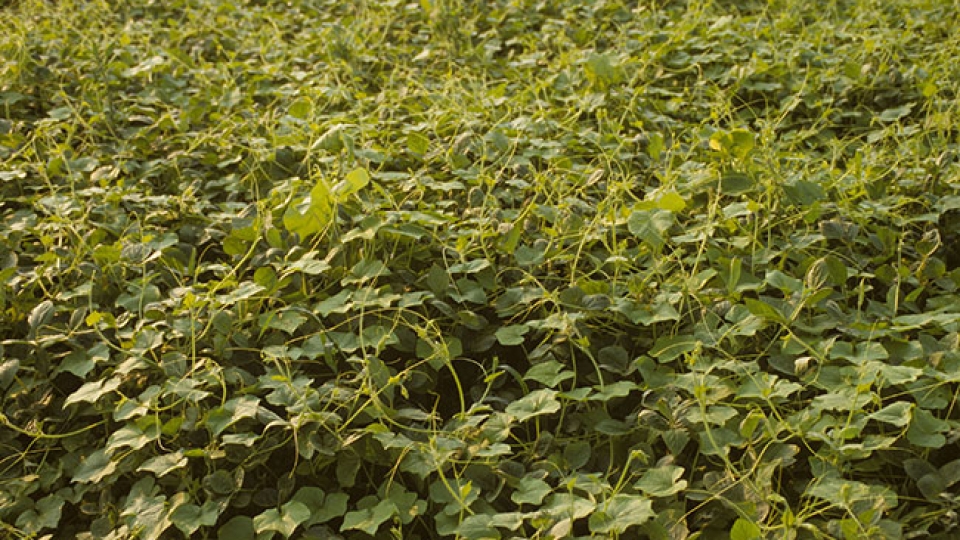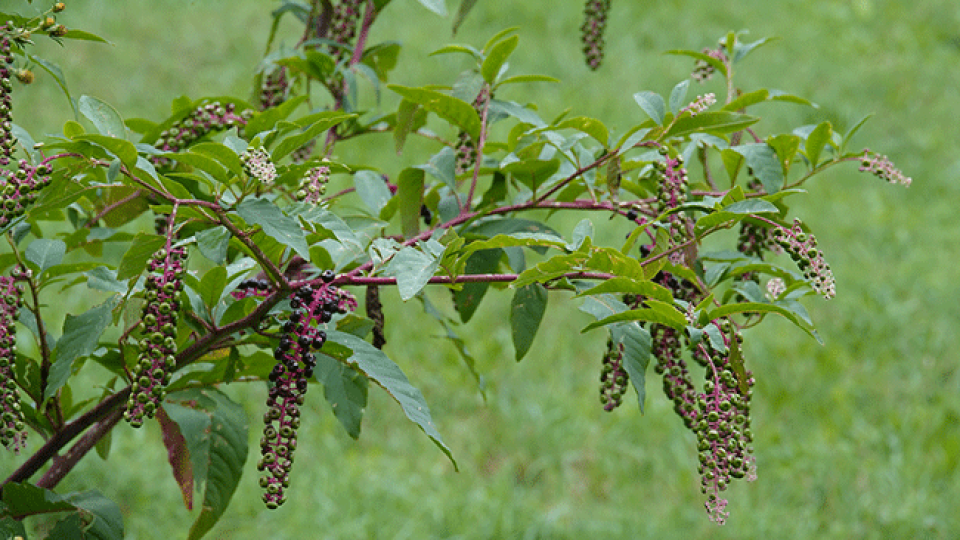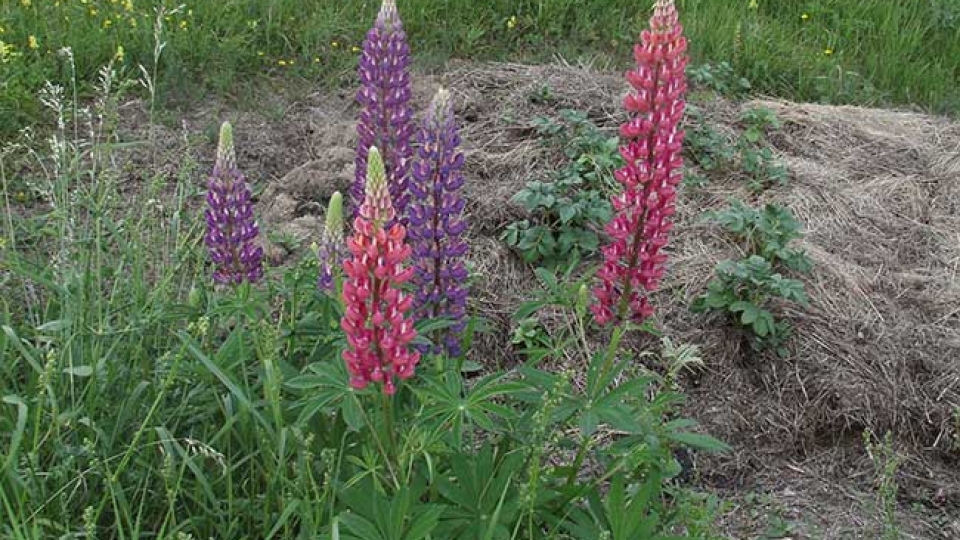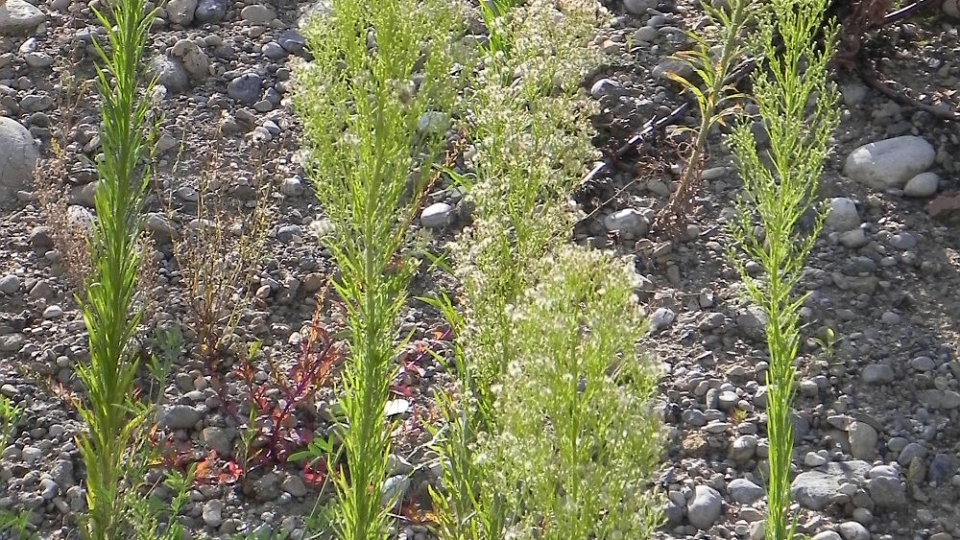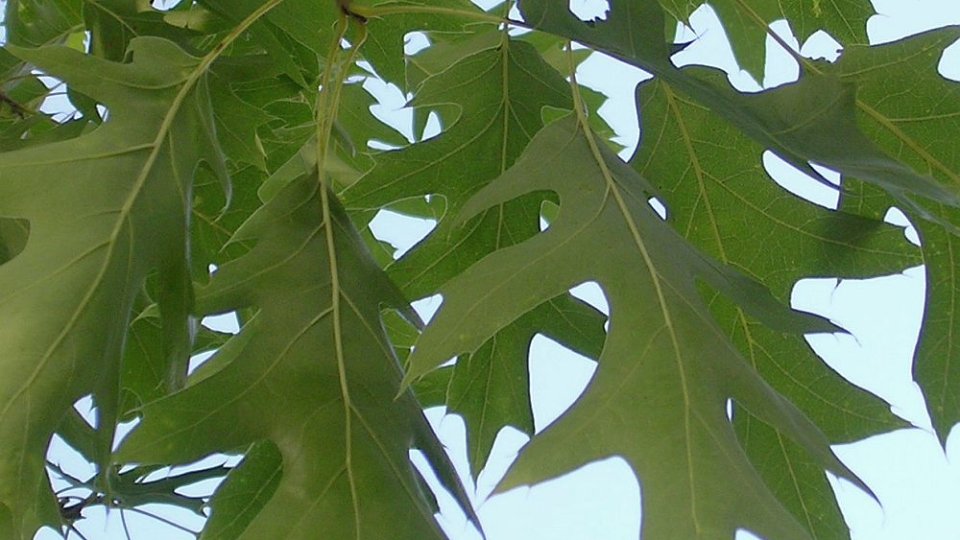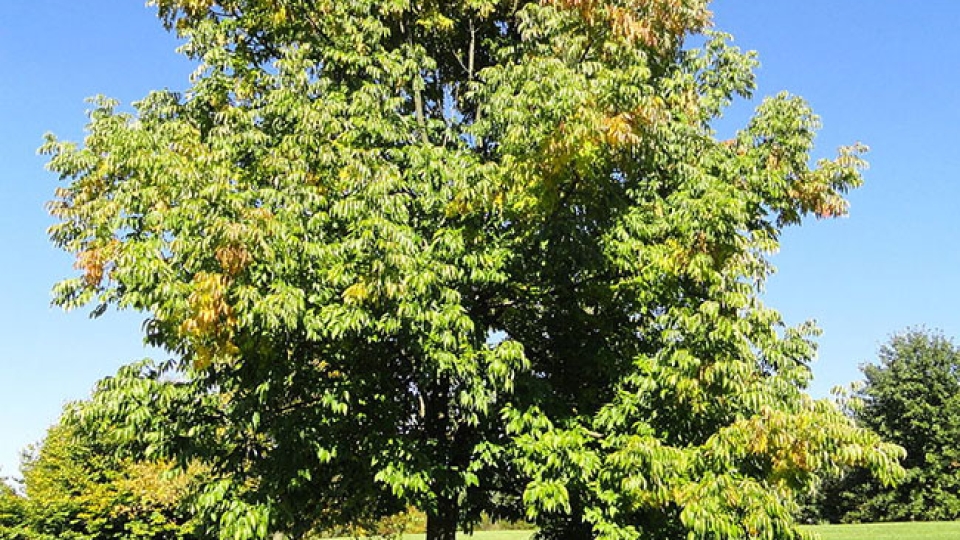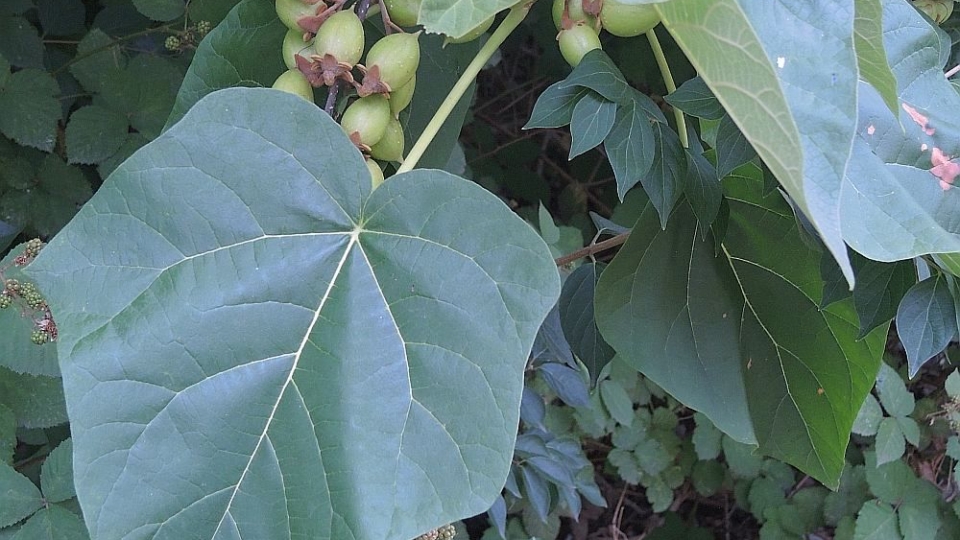Japanese barberry
(Berberis thunbergii)- Origin:
- East Asia
- Description:
- A densely spreading deciduous shrub with green to reddish leaves (more variegated in different varieties), 2-4 cm long, lobed, with a rounded apex and entire margins. Leaves modified into thin, sharp spines. Yellow to reddish flowers in short lobed clusters. Fruits red elliptic berries which remain on the branches even in winter.
- Growing site:
- Often grown as an ornamental shrub and in hedges, from where it can spread into woodland. Occurs spontaneously in hedgerow undergrowth and in the understorey of lowland woodlands. The species is naturalised and invasive, especially along forest streams.
- Reproduction:
- The seeds, the fruits, are eaten by birds, which spread the seeds so that the young plants can appear far from the mother plant. The shrub also spreads vegetatively, by branching and by rooting off broken branches.
- Removal:
- By digging up or clearing bushes and their underground parts. Seed dispersal is prevented by pruning after flowering and before fruit maturity. Underground parts and ripe fruit should be incinerated); leafy shoots (e.g. after hedge pruning) and flowers should be dried first before they can be composted.
- Warnings:
- It has very sharp thorns.
Oregon Grape
(Mahonia aquifolium)- Origin:
- North America
- Description:
- A shrub with evergreen shiny odd-feathered leaves. The leaves are thorny and toothed. The flowers are yellow, in erect clustered inflorescences. Fruits blackish purple, blue-tinged.
- Growing site:
- Planted in gardens, parks and cemeteries. Occurs subspontaneously in hedgerow undergrowth. The species is very adaptable to a wide range of conditions, tolerant of summer drought and poor soils, and thrives in shade.
- Reproduction:
- By seeds, fruits are spread by birds.
- Removal:
- Before flowering.
- Warnings:
- /
Cherry laurel
(Prunus laurocerasus)- Origin:
- SW Asia, Bulgaria, Serbia
- Description:
- Flowers white and small, in many-flowered erect clusters. Cortex brownish grey and smooth, green on young shoots. Fruit stony, 1 cm long, shiny black.
- Growing site:
- Ornamental plant in parks and gardens, cities and suburbs and for hedges. In some places it already occurs in the undergrowth of forests.
- Reproduction:
- By seed, spread by birds, flowering time: May.
- Removal:
- Pulling and digging up bushes.
- Warnings:
- /
Navadna amorfa
(Amorpha fruticosa)- Origin:
- North America
- Description:
- Deciduous deciduous shrub, 1-2 m tall. Leaves odd-lobed, with 5-17 pairs of narrowly ovate leaflets. The leaflet is seen in the light with tiny translucent dots. At the top of the shoots, narrow, 5-15 cm long, clustered, erect inflorescences develop with numerous dark purple flowers, from which yellow stamens sprout. The fruits are dark dotted pods about 1 cm long.
- Growing site:
- Sunny and semi-shaded habitats, wild along roadsides, in damp abandoned meadows, floodplains, scrub and woodland edges. A sessile ornamental shrub (honey-bearing).
- Reproduction:
- Common amorpha reproduces sexually by seeds and vegetatively by underground reproduction.
- Removal:
- By hand, by pulling or digging up whole plants. The cleared site should be monitored for several years as plants may regrow from unremoved underground parts. Plants are also depleted by frequent mowing over several years. As it also reproduces by seed, it should be removed before flowering. The fruiting shoots and underground parts should be disposed of by incineration.
- Warnings:
- /
Red osier dogwood
(Cornus sericea)- Origin:
- North America
- Description:
- Deciduous shrub with many woody dwarfs. The bark is smooth, dark red (rarely yellow or brown), shiny, with prominent lenticels (ventilation scars). Leaves are opposite, ovate-acuminate, 8-12 cm long. They are green above and grey to grey-green below. The flowers are fragrant, dirty white, clustered in dense, 5-¬8 cm wide, hellebore-shaped inflorescences. The spherical, juicy fruits are juicy, white or light grey, 7-9 mm in size.
- Growing site:
- Suitable for heavy, waterlogged soils, it occurs naturally in wetland habitats (e.g. black alder thickets), along rivers, in swamps, especially near settlements, where it is cultivated as an ornamental shrub.
- Reproduction:
- Grey dogwood spreads vegetatively by dwarfing: the lower shoots grow and take root. Man inadvertently spreads the species by discarding cut branches from cultivated shrubs into the natural environment. There, the branches take root and a new bush develops. The seeds are dispersed by birds. Flowering time: May-June, seed maturity: September-October.
- Removal:
- Shrubs should only be removed mechanically, as the use of herbicides is not allowed near water. Careful handling of cut branches is an important measure to prevent the spread of grey dogwood, preferably by incineration. The same should be done with ripe fruit. To prevent seed dispersal, the inflorescences should be cut immediately after flowering.
- Warnings:
- /
Bamboo
(Phyllostachys spp.)- Origin:
- Asia (China)
- Description:
- The stem articulations are distinctly unilaterally flattened. The stems usually have two lateral branches. The taller plants are characteristically drooping sideways. The leaf is tapered at the base to look like a petiole.
- Growing site:
- Along streams and woodland edges.
- Reproduction:
- Spreads by underground nerve growth. Flowering only every 65-120 years, not yet seen here.
- Removal:
- Mechanical digging and removal of all roots is very difficult. Cutting young shoots over several years to exhaust the plant can also be successful. Cut all green above-ground parts of the plant and wait for the bamboo to sprout new shoots from the root reserves. These are left to grow until they start to develop leaves, when the bamboo is still using up the stored reserves. Repeat the process until the new shoots run out.
- Warnings:
- /
Bur-cucumber
(Sicyos angulatus)- Origin:
- North America
- Description:
- The stem is pale green with hairs. Leaves are palmately divided, slightly toothed. The upper side is hairless, the lower side, especially on the veins, has fine hairs. The flowers are bisexual, small and greenish-yellow, clustered in cephalic inflorescences. Fruits are 1,5 cm long, clustered in groups, covered with protruding, hairy spines and containing 1 seed.
- Growing site:
- Fertile, moist habitats: floodplains, wet meadows, scrub, clearings, riverbanks, ditches, along field tracks and in mineral areas.
- Reproduction:
- Seeds spread by water, machinery, birds.
- Removal:
- Remove before fruit ripeness. Plants with developed fruits should be submitted for burning.
- Warnings:
- /
Pokeweed
(Phytolacca americana)- Origin:
- North America
- Description:
- Herbaceous perennial with large leaves and a reddish stem that is slightly woody at the base. It can grow over two metres in height. The leaves are large, alternate, glabrous, lance-shaped, up to 30 cm long. The underside of the leaves, the stem and the veins are pink. The flowers are white, star-shaped, sommerous and clustered in long, drooping clusters after flowering. The rounded, juicy fruits are blackish-blue, shiny and contain a purplish juice. The seeds are black and lenticular. Each winter the plant dies back to the roots.
- Growing site:
- It prefers shady and cool to moist ruderal sites, forest edges, lowland and montane mound sites. It can form dense stands and crowd out native vegetation, preventing natural rejuvenation of forests.
- Reproduction:
- Sexual reproduction by seeds dispersed by birds (the poison in the fruit is not toxic to them). Flowering time: June-September.
- Removal:
- Cut down the plant and dig up the underground parts. Remove and compost if the plants have not developed fruit. Fruits must be incinerated before disposal.
- Warnings:
- All parts of the plant are poisonous to humans, domestic animals and livestock. A few ingested berries are enough to cause poisoning.
Large-leaved lupine
(Lupinus polyphyllus)- Origin:
- North America
- Description:
- Herbaceous perennial with unbranched stems. Leaves long-stalked, palmately compound with 10-15 lanceolate leaflets 1-3 cm wide. Clustered inflorescences composed of numerous pink to purple butterfly-shaped flowers. They develop into 2,5-6 cm long pods with ovoid seeds.
- Growing site:
- Road banks, forest edges, along forest roads, stream banks, railway embankments, around human habitation. Found mainly on siliceous substrates in the montane zone.
- Reproduction:
- In late summer and autumn, fruits develop - pods which open explosively and disperse the seeds. The seeds germinate after 50 years.
- Removal:
- removal of whole plants, in larger stands regular mowing before the plants flower and fruit. Mowing should be carried out twice a year for 3-5 years, the first time before flowering and two months later.
- Warnings:
- Lupines are poisonous (including to livestock) if consumed, but handling the plants is not dangerous.
Horseweed
(Conyza canadensis)- Origin:
- North America
- Description:
- Canada Cowslip is an erect annual plant with one or more stems growing from a ground-growing rosette of leaves. It is 0.5 to 1 m tall, but can be much shorter. The leaves are lance-shaped, up to 10 cm long and 1 cm wide, shallowly toothed, green, almost glabrous on the surface, and twiggy at the margins. The tiny flowers are clustered into numerous inflorescences - cymes. The cymes are small, tubular flowers, yellow inside and white on the periphery, tongue-shaped. Fruits are dry, single-seeded, wind-dispersed.
- Growing site:
- Thrives on banks, fields, clearings, roadsides and other ruderal sites.
- Reproduction:
- Sexual reproduction by seed, flowering May-October, seed maturity June-November.
- Removal:
- Plants are removed by digging and weeding before flowering. Plants weeded before flowering can be composted. Plants which are fruiting should be incinerated, as the fruits also ripen on the fruiting plants during drying.
- Warnings:
- /
Northern Red Oak
(Quercus rubra)- Origin:
- North America
- Description:
- The skin is silvery grey and initially smooth. The leaves are up to 25 cm large, variably shallowly cut into cloths as wide as the notches between them. They are dull green below, sometimes shiny above, turning dark red or orange-brown in autumn. The hairs fall off early, remaining only below the vascular angles. The fruit (acorn), 15-25 mm in diameter, takes two years to ripen. The bowl is very shallow, saucer-shaped and covered with adherent scales.
- Growing site:
- parks, gardens and woodland plantations. It prefers acid, loose, fresh sandy-loam soils, tolerating shading better than native oaks.
- Reproduction:
- By fruit - acorns, which are also dispersed by woodland rodents. The seeds germinate very well.
- Removal:
- Pulling and digging up young plants and felling trees before fruit development. Cutting is repeated in case of regrowth.
- Warnings:
- /
Ameriški jesen
(Fraxinus americana)- Origin:
- North America
- Description:
- The bark on the trunk is grey and cracked and flaking when the tree is young. The shoots are olive green, bare and shiny. The leaves are 20-35 cm long, oddly pinnately compound, with 5-9 leaflets, lanceolate to elliptic, 6-13 cm long and 2,5-7,5 cm wide. They are dark green above, greyish-white below, mostly glabrous. In autumn they turn yellow, red or purple. The flowers are unisexual, without a corolla, with a tiny calyx about 1 mm long. The fruit is a 3-5 cm long winged nut, often with a persistent calyx at the base, round in cross-section in the seed part.
- Growing site:
- Thrives well in deeper, moist to wet, flooded, nutrient-rich soils. It also grows on slightly drier soils, but is less vigorous. Planted in woodland plantations and parks.
- Reproduction:
- by seed, flowering time: April, May.
- Removal:
- /
- Warnings:
- /
Empress tree
(Paulownia tomentosa)- Origin:
- Asia (China)
- Description:
- Fast-growing deciduous tree with large, oppositely arranged, long-stalked leaves, 15-30 cm long. They are heart-shaped, ovate, shortly acuminate, entire-edged or shallowly tricuspid, hairy on both sides. The flowers are clustered in spreading inflorescences, bell-shaped, 4-6 cm large, white to pink. It flowers before leafing out. The fruit is a several cm long pendulous, dart-shaped, walnut-like head, from which seeds are ejected months after flowering, making the plant easy to sow in a wide variety of sites.
- Growing site:
- It is grown as an ornamental tree in parks, roadsides and gardens. It grows wild along old walls, in crevices, near human dwellings in ruderal places.
- Reproduction:
- By numerous seeds (flowering time April-May) and by underground shoots.
- Removal:
- Pulling and digging up young plants with underground parts. Larger trees are difficult to remove by felling as new trunks grow quickly. Removal of suckers over several years or herbicide treatment of suckers and freshly cut stumps is recommended. Branches with fruits containing ripe seeds and excavated plants should be burned. Trees may also be ringed.
- Warnings:
- /

